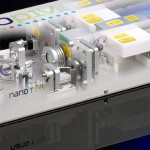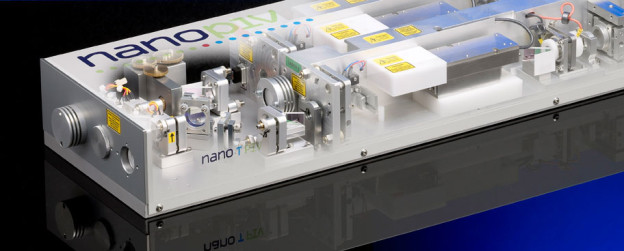Broader, Thinner and More Uniform Light Sheets.
Litron off ers telescopic versions of its popular Nano L and LPY PIV laser systems for dual pulse applications requiring a significantly lower M2 value than traditional lasers but with the excellent spatial uniformity of a conventional resonator. This gives the possibility to make broad, thin, uniform light sheets for large area or high resolution PIV studies.
ers telescopic versions of its popular Nano L and LPY PIV laser systems for dual pulse applications requiring a significantly lower M2 value than traditional lasers but with the excellent spatial uniformity of a conventional resonator. This gives the possibility to make broad, thin, uniform light sheets for large area or high resolution PIV studies.
Litron can achieve a beam divergence as low as 0.8 mrad at 532 nm by placing a telescope inside the resonator. This is around four times lower than with a conventional laser and around twice that of a Gaussian coupled laser. However, the Gaussian coupled laser suffers from poor mid-field spatial uniformity, leading to non-uniform illumination of the experimental area.
Beam divergence does not tell the whole story. A ‘figure of merit’ for comparing a laser beam’s focusability is M-squared. A theoretically perfect laser beam has an M2 value of one and real lasers have values of greater than one; the actual value of a real laser beam denotes how many times narrower or thicker a light sheet will be compared with a sheet from a perfect beam.
For Gaussian unstable lasers, M2 is typically less than the value predicted by measuring the divergence and beam diameter at the output; the two values are usually closely related for stable lasers.
For PIV applications, a four times lower M2 value means that a light sheet can be four times thinner for a given propagation distance or else four times longer for a given thickness.
For more information visit: http://www.litronlasers.com/pages/nanot_piv.html
